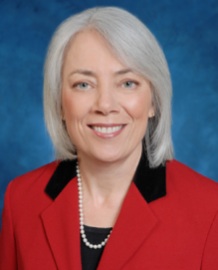 With Greater Commitment, Funders Can Solve the Healthcare Workforce Crisis
With Greater Commitment, Funders Can Solve the Healthcare Workforce Crisis
by Darlene J. Curley, RN, MS, FAAN; CEO of the Jonas Family Fund and Executive Director of the Jonas Center for Nursing and Veterans Healthcare, was among the panelists at the recent Philanthropy New York Briefing: Healthcare Crisis: Do We Have the Workforce Needed for Today and Tomorrow. The Jonas Center was a sponsor of the event.
Recent developments in our healthcare system, such as the implementation of the Affordable Care Act, combined with a rapidly aging population, pose a number of challenges that will become a crisis if unaddressed. Key among them is the vastly increased demand for health services. Private philanthropy has played a crucial role in expanding America’s healthcare workforce, but greater commitment among donors is needed to speed progress.
Since 2010, 20 million more Americans have gained health insurance coverage because of the ACA [1] - and these individuals are accessing the system at an unprecedented rate. In addition, about one in every seven Americans – roughly 46.2 million people – is elderly.[2] That number will continue to grow and by 2060 there will be approximately 98 million older adults in our population.[3]
With these demographic shifts comes a need for significantly more health professionals – particularly nurses and primary care physicians. But there is a dire shortage of critical positions to accommodate workforce needs:
- Nurses are looking toward retirement – 53 percent of working nurses[4] and 72 percent of full-time nursing faculty are over age 50.[5]
- There are too few teachers to prepare the next generation of nurses – a nursing faculty vacancy rate of 6.9 percent6 resulted in nearly 69,000 qualified applicants being turned away from nursing baccalaureate and graduate programs in 2014.7
- The number of primary care doctors is dwindling – there is an anticipated shortage of between 46,000-90,000 physicians by 2025,8 especially in acute primary care, as today’s medical students, facing high tuition and student debt, choose more lucrative subspecialties.
Private philanthropy, representing a variety of disciplines and industries, must be a leading voice in addressing health workforce challenges – serving as needed support where federal and state efforts stop short. The workforce problem requires donors who will step in to invest time and funds into human capital – creating education and training opportunities for future health workers. As philanthropists enter this arena, we recommend the following funding approaches to achieve the greatest impact:
- Investing in scholarships, programming and student debt alleviation, which would allow students to mitigate debt burden, access innovative health systems, and, ultimately change workforce behavior.
- Partnering on projects with similar goals that move work forward, instead of replicating efforts, to create continuity and effectiveness.
- Supporting projects that are specific and sustainable and have potential for far-reaching and lasting impact.
- Committing for the long-haul, via multi-year funding and long-term relationships, will produce impactful results.
- Focusing on patient outcomes to track progress. Ask the question, “Did this effort make things better?” Giving grants is not enough; we must measure the true impact of our philanthropy.
For the past decade, the Jonas Center for Nursing and Veterans Healthcare has single-mindedly pursued ways to build the healthcare workforce by addressing the shortage of nursing faculty. Everything we have done since our founding in 2006 has maximized the power of partnerships and collaboration. By working together with 40 partners we’ve seen donors spark new models and solutions with potential for national replication.
The challenges our health system faces today create immense opportunities for philanthropy to pioneer vital solutions to health workforce issues. Representing various fields and industries, the private sector is especially well-positioned to be a convener, a catalyst and an innovator addressing the urgent need for a stronger and expanded workforce.
